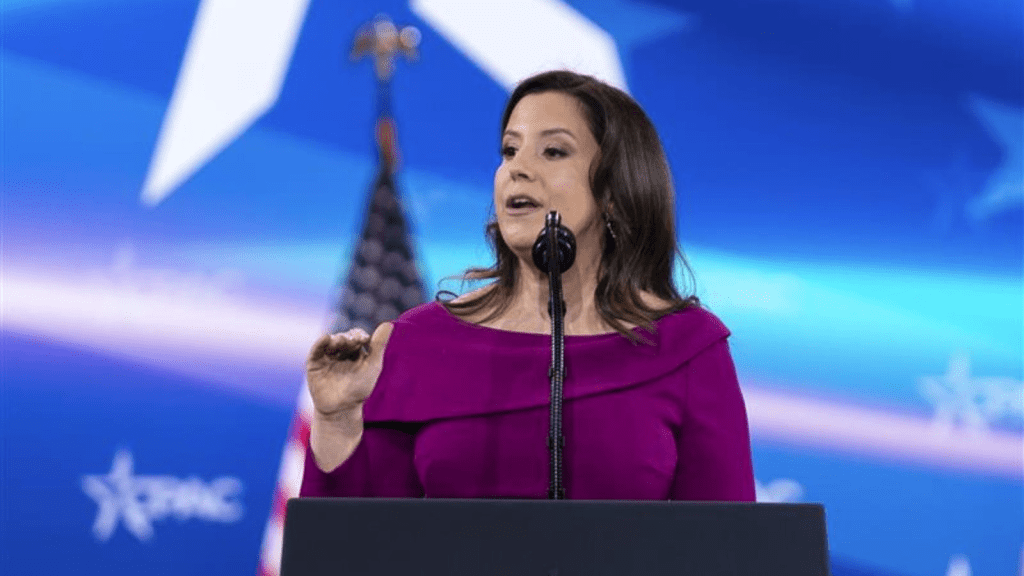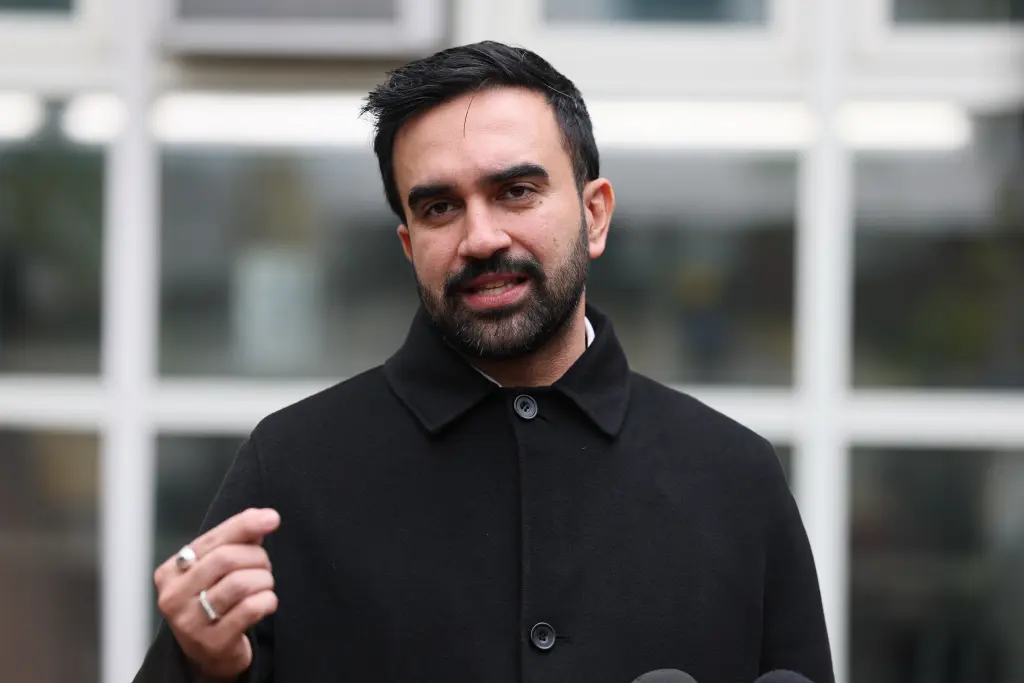Elise Stefanik Charges Kathy Hochul With “Bending the Knee” to Socialist Zohran Mamdani — The Explosive Launch Pad for Her 2026 New York Governor Bid
In a high-stakes moment on Friday, U.S. Representative Elise Stefanik, a key figure in the Republican Party, publicly tore into New York Governor Kathy Hochul for what she described as capitulating to the new political momentum embodied by Zohran Mamdani, the newly elected mayor of New York City who positions himself as a democratic socialist. Stefanik argued that Hochul’s endorsement of Mamdani, followed by the city’s shift, signaled a tolerance of ideological extremes and a failure of centrist leadership. Her remarks came amid the launch of her candidacy for the 2026 gubernatorial race, where Hochul is expected to seek re-election, setting up a bitter statewide contest.

What Stefanik painted was more than an endorsement gone wrong. She offered a narrative of a governor who, in her view, has lost control of the party and ceded ground to a rising left-wing coalition in New York City — a coalition she argues now threatens key cities, suburbs and the entire state. By tying Hochul to Mamdani, she seeks to bring a Brooklyn-Manhattan political moment into Albany’s political arena, presenting herself as the counterweight to what she casts as a “radical takeover.”
For Hochul, the moment came at a critical juncture. Since assuming the office in 2021 after the resignation of her predecessor, she has worked to present a centrist Democratic image — one that bridges reformist progressivism with traditional party pragmatism. Yet the decision to publicly back Mamdani, a candidate whose views are often described as well to the left of the Democratic mainstream, has invited scrutiny from across the political spectrum. Observers say the endorsement raised eyebrows because it appeared to defy the usual Democratic calculus of cautious coalition-building and centrist appeal, particularly in a state whose suburbs and upstate regions lean more moderate.
In her campaign video, Stefanik framed the state as one in decay: unaffordable, unsafe and failing under what she termed “Biden-era liberal leadership.” She cast herself as the fighter who will restore order and affordability, promising a break from the status quo. Her attack on Hochul — calling her endorsement of Mamdani evidence of “bending the knee” to socialist politics — serves multiple purposes. It rallies the Republican base, places Hochul on the defensive, and stakes out terrain in suburban and upstate New York where voters are grappling with spiraling costs, concerns about crime, and the sense that big-city politics have outpaced them.

Hochul’s campaign responded swiftly, though with different emphasis. The governor’s team highlighted Stefanik’s close alignment with former President Donald Trump and the national MAGA-style agenda, arguing that Stefanik would bring Washington-style partisan warfare to Albany rather than problem-solving leadership. Indeed, Stefanik’s record — once moderate during her early years in Congress but later sharply aligned with Trump’s agenda — becomes a focal point of Hochul’s counterattack.
Beyond the personalities, the deeper significance of this exchange lies in how it speaks to the evolving political fault lines in New York. The state has long been assumed a reliable Democratic bastion, yet recent trends show fissures. Stefanik’s entry into the race and her messaging about affordability, law and order, and the urban-to-rural divide tap into voter frustrations that have grown louder in recent years. The rise of Mamdani’s left-wing candidacy in New York City adds a new layer of urgency for both parties — on one hand, progressives view his success as a breakthrough moment; on the other, Republicans see it as evidence that the Democratic coalition is shifting. By linking Hochul to Mamdani, Stefanik is attempting to frame the governor as out of step with moderate and suburban voters.

Yet it is not without risk. Hochul enjoys advantages in a state where Democrats out-number Republicans by large margins, and she remains the incumbent. Winning a statewide campaign in New York demands coalitions that stretch from New York City suburbs up through the vast rural stretches upstate. Stefanik’s message may galvanize the right, but she must also make inroads beyond her Upstate base. Hochul, for her part, must contend with the challenge of defining herself between the party’s progressive wing and its moderate center — and her endorsement of Mamdani has invited questions about whether she can still serve as that unifying figure.

In the media landscape, the timing of Stefanik’s criticism coincides precisely with her official entry into the governor’s race. Her narrative has been crafted to give the race a clear frame: Hochul has backed socialist politics; Stefanik will oppose them and fight for everyday New Yorkers. By using the phrase “bending the knee,” she underscores the symbolic nature of the moment — suggesting not just a policy disagreement but a fundamental concession of values and power. The phrase draws on themes of submission and upheaval, positioning Stefanik as the one pushing back, not just campaigning.
At the same time, Hochul’s messy relationship with her own party and shifting dynamics inside the Democratic coalition have added to her vulnerability. Her endorsement of Mamdani was widely seen as an attempt to reach younger, more progressive voters around affordability and housing — yet it came at the price of alienating some of her more centrist supporters. The perception of being outmaneuvered by a rising figure like Mamdani has allowed Republicans to portray her as politically weak, and Stefanik seized on that narrative immediately.

As the 2026 election approaches, this early skirmish signals that the campaign will not simply be about policy ideas, but about narratives of identity, direction and power. Will New York continue down the path of progressive urban politics with the city’s agenda shaping Albany, or will there be a pushback from suburbs and rural areas seeking a different vision of governance? Stefanik is betting on the latter, tying Hochul to what she casts as a dangerous trend. Hochul must reassert herself as the leader capable of bridging New York’s diverse regions and interests.
For voters watching this unfold, the key implication is that the gubernatorial race is already being framed not just as one person’s ambition, but as a referendum on the direction of New York’s future. The narrative the parties choose will matter as much as the policies — and both Hochul and Stefanik have signaled early that they intend to define that narrative rather than wait passively.
Ultimately, the “bending the knee” accusation may serve as shorthand for something more substantial: a clash over whether New York’s leadership will lean into urban progressive momentum or pull back toward suburban-upstate priorities. Stefanik has chosen sides clearly and aggressively. Hochul now must respond not just to her challenger, but to a shifting electorate. The drama of endorsements, ideological branding and strategic positioning has only just begun.



